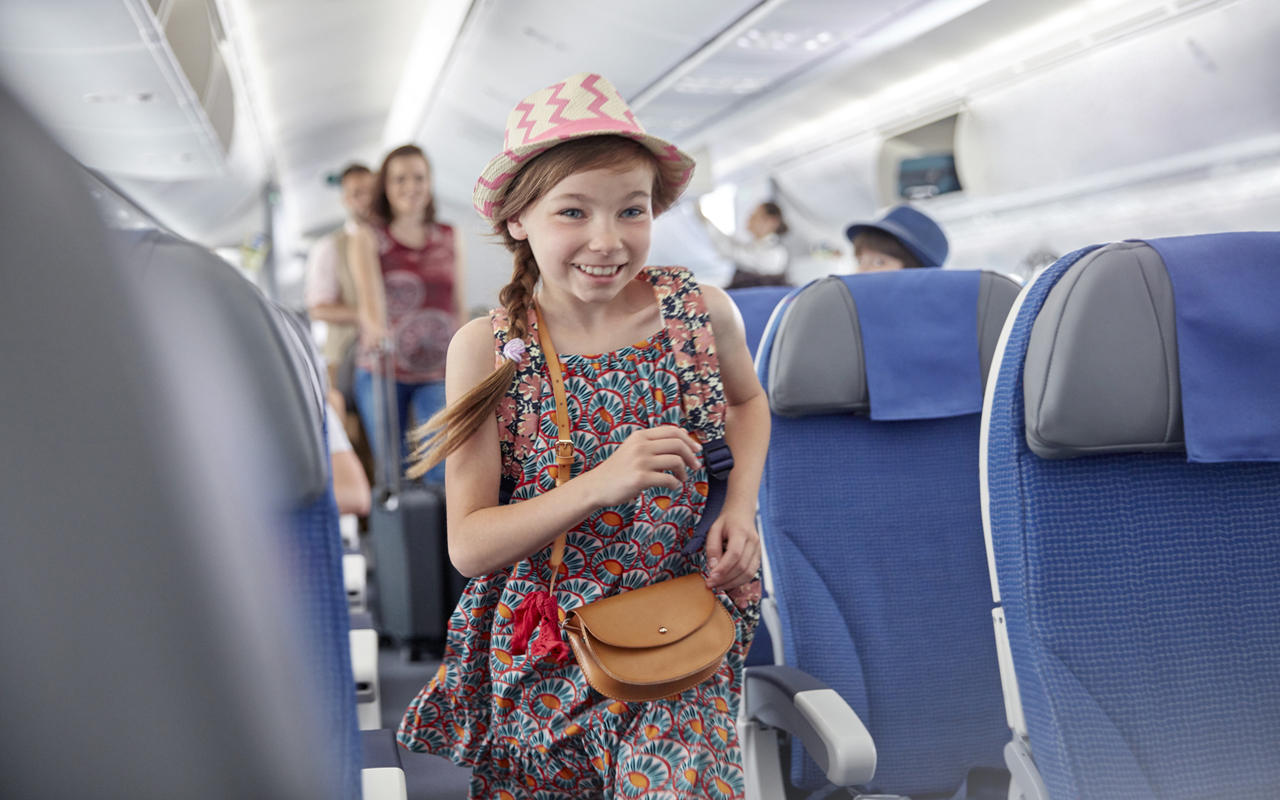Take Advantage of Super-Low Student Loan Rates
Borrowers may be able to save thousands of dollars in interest thanks to a drop in rates.

The government is handing out graduation gifts: record-low interest rates on students loans.
On July 1, rates on Stafford loans fell to 3.42%, and rates on PLUS loans for parents dropped to 4.22%. These rates have fallen 4.77 percentage points over the past three years.
Maybe the rate change is not as exciting as, say, finding a job or winning the lottery. But rock-bottom rates mean lower monthly payments (good news if you're pinching pennies) and less interest paid over the life of the loan. In other words, financing a college education has become less expensive.

Sign up for Kiplinger’s Free E-Newsletters
Profit and prosper with the best of expert advice on investing, taxes, retirement, personal finance and more - straight to your e-mail.
Profit and prosper with the best of expert advice - straight to your e-mail.
If you have a Stafford loan from July 1998 or later, now you'll pay 3.42% interest instead of 4.06%. The lower rate translates to savings of about $62 per year on the average $17,000 federal loan debt for undergraduate borrowers. Those who've come out of grad school with the average $23,000 in federal loans will cut about $83 annually off their payments.
The savings might not seem like a lot. But if borrowers were paying the maximum 8.25% rate instead of the record-low 3.42% rate, they would pay almost $5,000 more in interest over the life of a $17,000 ten-year loan (about $6,600 more on a $23,000 loan).
Rates on pre-1998 loans will be a little higher but still less than 5%. If you're still in school or in the six-month grace period following graduation, you'll pay only 2.82% interest. And parents with PLUS loans saw interest rates drop to 4.22% from 4.86%. Perkins loans won't be affected because they have a 5% fixed rate.
To take advantage of this sweet deal, you don't have to do a thing -- rates drop automatically. Stafford and PLUS loan rates are adjusted each July 1 based on the rates of short-term Treasury bills auctioned at the end of May. For more on the basics of student loans, see our tutorial.
How to lock in low rates
If you want these great rates to last longer than a year, you'll have to refinance (or "consolidate," as lenders call it) your federal student loans before July 2004, when the rates change again. You can wait until June 2004 when the T-bill rates are announced to gauge if Stafford and PLUS loans will drop even lower. Once you consolidate, you can't do it again unless you're adding a new loan to the mix.
For those who consolidated a couple years ago and locked in at a higher rate, they might get some relief. There's a push in Congress to give borrowers who've consolidated another chance. Rep. Danny Davis (D.--Ill.) has introduced legislation to let borrowers refinance (again) at a variable rate rather than a fixed rate, and similar bills are in the works. Don't expect anything to come of these proposals until 2004, when Congress might address them as part of the reauthorization of the Higher Education Act, says Ivan Frishberg of Public Interest Research Group.
More than half the people with student loans don't know they have the option to consolidate, says Barry Morrow, chief executive of Collegiate Funding Services. Even though lenders call it consolidation, you don't have to have multiple loans. Because all you're doing is refinancing at a lower rate and setting a new repayment term (usually ten years), one loan is enough to take advantage of this deal. If you do consolidate two or more loans, the interest rate will be the weighted average of the loans combined (the bigger loan counts more), rounded up to the nearest one-eighth of a percent.
Morrow says most people who consolidate are recent graduates looking for immediate cash flow relief -- lower payments to put money back into their pockets or pay off credit card bills. Recent graduates can lock in the 3.46% rate if they consolidate before their grace period ends. (But wait until a month before the period ends because repayment starts immediately after you consolidate.)
When it's a bad deal
Consolidation isn't for everyone. Borrowers with just a few years left on their loans could end up paying more interest because the clock is reset on their repayment term. Those borrowers also may lose special discounts offered by their lenders. For example, Sallie Mae offers a one-percentage-point interest rate deduction if borrowers make 48 consecutive on-time payments. When you consolidate, you lose that deduction until you've made another 48 payments. And holders of some federal loans get special deferment options that they would lose if they consolidated. So check with your lender before consolidating.
You can't consolidate if you've refinanced your loans in the past, and you can't consolidate federal loans with private loans. Collegiate Funding Services has a program that allows borrowers to bundle their private and federal loans into one account with one monthly payment. But the federal and private loans are kept separate within the account. (Call 888-423-7562 for details.) And the federal government doesn't allow some loans, such as Law Access loans, to be consolidated.
The Education Department lists which loans can be consolidated, as well as who is eligible for a direct consolidation loan.
If you're eligible and interested in refinancing, first call your lender or check its Web site to find out what consolidation options it offers. Then you can shop around for a better deal if you have loans from more than one lender. You won't get lower rates because they're set by the government, but lenders such as Sallie Mae, Nellie Mae and Collegiate Funding Services offer discounts for timely payments that the federal government doesn't.
| Student Loans at a Glance | Loans rates (in parenthese) are effective July 1, 2003 through June 30, 2004. They are effective on loans disbursed after July 1, 1998. | |||
| Row 1 - Cell 0 | |||
| TYPE | BORROWER | INTEREST RATE | TERM |
| Stafford | student | 91-day T-bill + 2.3 points (3.42%) | 10-30 years |
| PLUS | parent | 52-week T-bill + 3.1 points (4.22%) | 10-30 years |
| Perkins | student | fixed at 5% | 10 years |
| Row 6 - Cell 0 |
Get Kiplinger Today newsletter — free
Profit and prosper with the best of Kiplinger's advice on investing, taxes, retirement, personal finance and much more. Delivered daily. Enter your email in the box and click Sign Me Up.

Award-winning journalist, speaker, family finance expert, and author of Mom and Dad, We Need to Talk.
Cameron Huddleston wrote the daily "Kip Tips" column for Kiplinger.com. She joined Kiplinger in 2001 after graduating from American University with an MA in economic journalism.
-
 The AI Doctor Coming to Read Your Test Results
The AI Doctor Coming to Read Your Test ResultsThe Kiplinger Letter There’s big opportunity for AI tools that analyze CAT scans, MRIs and other medical images. But there are also big challenges that human clinicians and tech companies will have to overcome.
By John Miley Published
-
 The Best Places for LGBTQ People to Retire Abroad
The Best Places for LGBTQ People to Retire AbroadLGBTQ people can safely retire abroad, but they must know a country’s laws and level of support — going beyond the usual retirement considerations.
By Drew Limsky Published
-
 What To Know if You’re in the Market for a New Car This Year
What To Know if You’re in the Market for a New Car This YearThe Kiplinger Letter Buying a new car will get a little easier, but don’t expect many deals.
By David Payne Published
-
 Will Lower Mortgage Rates Bring Relief to the Housing Market?
Will Lower Mortgage Rates Bring Relief to the Housing Market?The Kiplinger Letter As mortgage rates slowly come down here's what to expect in the housing market over the next year or so.
By Rodrigo Sermeño Published
-
 Car Prices Are Finally Coming Down
Car Prices Are Finally Coming DownThe Kiplinger Letter For the first time in years, it may be possible to snag a good deal on a new car.
By David Payne Published
-
 New Graduates Navigate a Challenging Labor Market
New Graduates Navigate a Challenging Labor MarketThe Kiplinger Letter Things are getting tough for new graduates. Job offers are drying up and the jobless rate is increasing. Are internships the answer?
By David Payne Last updated
-
 When's the Best Time to Buy a Domestic Flight? The Kiplinger Letter
When's the Best Time to Buy a Domestic Flight? The Kiplinger LetterThe Kiplinger Letter A new study by CheapAir.com has crunched the numbers.
By Sean Lengell Published
-
 Woes Continue for Banking Sector: The Kiplinger Letter
Woes Continue for Banking Sector: The Kiplinger LetterThe Kiplinger Letter Regional bank stocks were hammered recently after news of New York Community Bank’s big fourth-quarter loss.
By Rodrigo Sermeño Published
-
 Anxious Flyers Take Note: The Kiplinger Letter
Anxious Flyers Take Note: The Kiplinger LetterThe Kiplinger Letter Whether it's the routes to avoid that have the most turbulence or the safest airline, we've got you covered.
By Sean Lengell Published
-
 The Auto Industry Outlook for 2024
The Auto Industry Outlook for 2024The Kiplinger Letter Here's what to expect in the auto industry this year. If you’re in the market for a car it won’t be quite as daunting as it was during the pandemic and after.
By David Payne Published